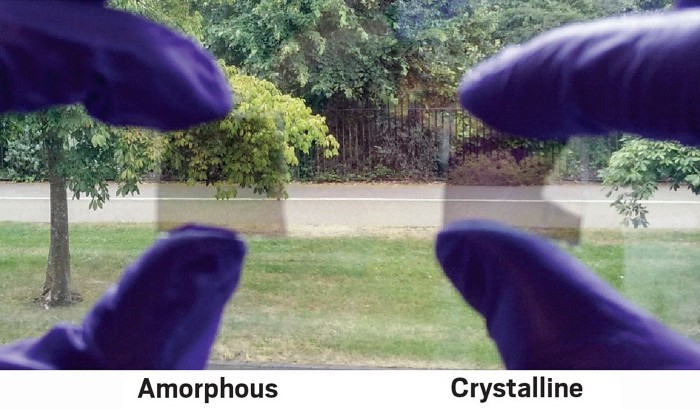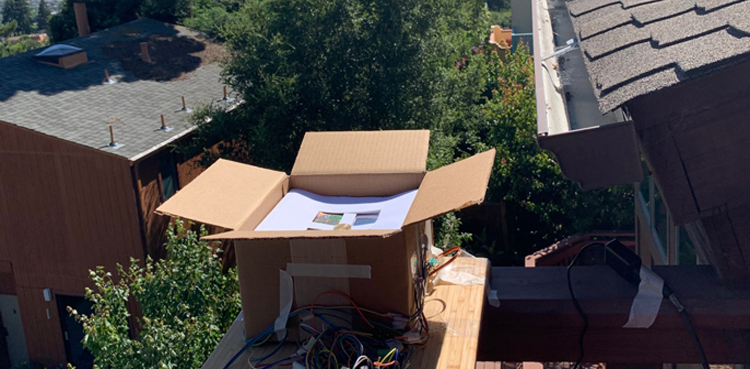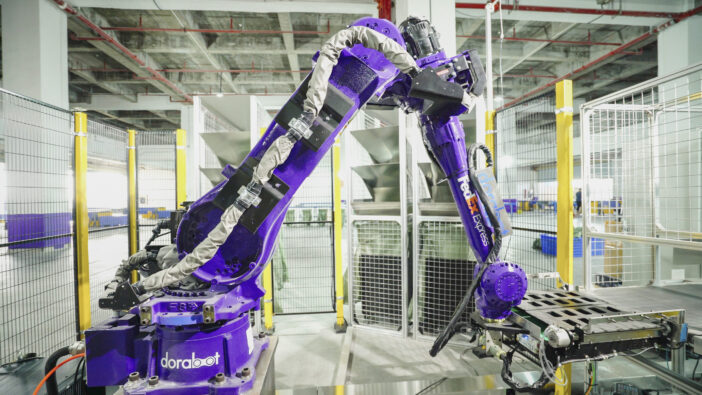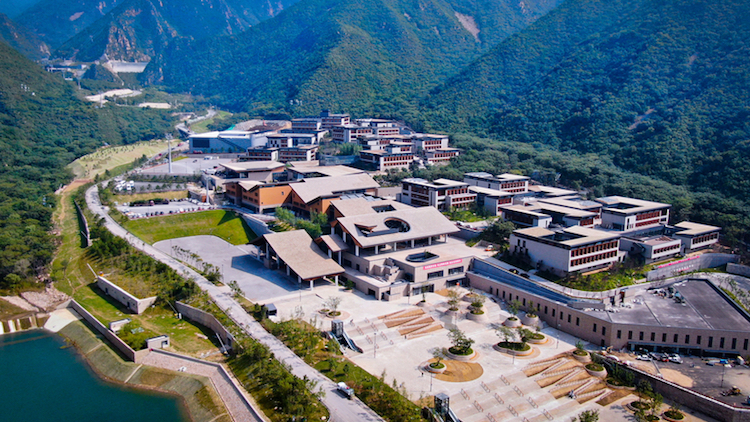 Switchable smart window coating can heat or cool a roomPhase-change material can convert sunlight into heat or reflect it while staying transparent
Switchable smart window coating can heat or cool a roomPhase-change material can convert sunlight into heat or reflect it while staying transparentPhase-change material can convert sunlight into heat or reflect it while staying transparent
Anew window coating absorbs the sun’s warm near-infrared rays in the winter and reflects them in the summer while keeping the glass transparent (ACS Photonics 2021, DOI: 10.1021/acsphotonics.1c01128). Windows with the switchable glaze could cut the energy use of a house by up to 25% compared with windows used in new construction today.
Energy-efficient windows could play a key role in reducing the energy needed to heat and cool buildings, which makes up more than one-fifth of all the energy used by developed countries. Today’s efficient windows have two glass panes with low-emissivity coatings that improve insulation by preventing heat transfer. Smart windows that can be electrically triggered to darken and block the sun’s visible and near-IR light are also now on the market.
But smart windows that remain see-through would be more desirable to building inhabitants, which inspired Nathan Youngblood of the University of Pittsburgh, Harish Bhaskaran of the University of Oxford, and their colleagues to make the new coating. Their ultrathin material heats or cools a building’s interior without affecting visibility by absorbing or reflecting the sun’s near-IR rays. “The unique twist on smart windows is that the visible light transmission is pretty much unchanged,” Youngblood says, “so it is energy-saving, aesthetically pleasing, and also provides thermal benefits.”
The heart of the coating is a 12 nm layer of a phase-change material, Ge20Te80, which can switch reversibly from a crystalline to an amorphous state when heated to 280–450 °C. As a proof-of-concept, the researchers deposited the coating on 25.8 cm2 samples of glass. For commercial, double-pane windows, they propose putting it on the outside-facing side of the interior pane of glass.
Using transparent heating wires integrated on the glass sample, they showed that the glaze could be switched to the amorphous state, which reflects the sun’s near-IR energy. In the crystalline state, the coating absorbs the energy, which is transferred to the silica glass window and radiated into the building as heat. The transparency changes by only 10% between the two states.
The coating’s performance depends on the amount of near-IR solar energy it can harvest or reflect, so the researchers also modeled how much energy the window would save when used in nine different geographical areas around the globe. Compared with commercially available double-pane windows, the glazed windows cut energy use by 8–25%, working better in sunnier climates. Those calculations took into account the energy required to control the phase-change material’s state.
Still, Youngblood admits “the material is not ready for primetime yet” because of the high temperatures it needs. The material can also be controlled using electrical pulses, but that would take a lot of power for large windows, he says. “Future work would be to reduce the amount of heat it takes to switch between states” by doping the materials to reduce switching temperature, he adds.
The glaze’s ability to convert IR radiation to heat without affecting transparency is “a much-coveted feature,” says Juejun Hu, a materials scientist and engineer at MIT. The technology would be even more promising if the researchers could further improve visible transmission with improved material and layer designs, he says. “I would like to see the technology being scaled to actual windows.”
https://www.civilengineering.ai/switchable-smart-window-coating-can-heat-or-cool-a-room-2/

 LIC tower is the tallest building in New York City with Smart Windows | amNewYorkView, Inc. (View), the foremost innovators in smart building technology, has made history by having their Smart Windows installed at the Durst Organization’s
LIC tower is the tallest building in New York City with Smart Windows | amNewYorkView, Inc. (View), the foremost innovators in smart building technology, has made history by having their Smart Windows installed at the Durst Organization’s Las Vegas and Digital Twins – A Blueprint for a Clean City?Is Las Vegas a blueprint for a clean city? A seven sq km area of downtown Las Vegas is being used to demonstrate a net-zero carbon emissions future.
Las Vegas and Digital Twins – A Blueprint for a Clean City?Is Las Vegas a blueprint for a clean city? A seven sq km area of downtown Las Vegas is being used to demonstrate a net-zero carbon emissions future. Preventative Maintenance Solutions: New Innovative Products for Smart Home and Building and Workplace SafetySince its inception in 1933, Omron has become one of the leading innovators in design and manufacturing across a wide range of industries.…
Preventative Maintenance Solutions: New Innovative Products for Smart Home and Building and Workplace SafetySince its inception in 1933, Omron has become one of the leading innovators in design and manufacturing across a wide range of industries.… This contactless system combines embedded ML and sensors to improve elevator safetyArduino Team — January 29th, 2022 As an entry into the 5th IEEE National Level Project Competition, Anway Pimpalkar and his team wanted to design a system that could help improve safety and usability within elevators by detecting if a human
This contactless system combines embedded ML and sensors to improve elevator safetyArduino Team — January 29th, 2022 As an entry into the 5th IEEE National Level Project Competition, Anway Pimpalkar and his team wanted to design a system that could help improve safety and usability within elevators by detecting if a human
 Smart Keypads: A Must for Home AutomationSmart Keypads are the must have for home automation. Our new line of wireless smart keypads can control any appliance or device in your home. Choose the best home automation system in India based on your needs.
Smart Keypads: A Must for Home AutomationSmart Keypads are the must have for home automation. Our new line of wireless smart keypads can control any appliance or device in your home. Choose the best home automation system in India based on your needs. AI Traffic Light That Improves Traffic Flow By Up To 15% In Simulation Will Now Be Used In Real Life | CarscoopsThe lights use high-def cameras and radar sensors to learn traffic patterns and adjust signals appropriately
AI Traffic Light That Improves Traffic Flow By Up To 15% In Simulation Will Now Be Used In Real Life | CarscoopsThe lights use high-def cameras and radar sensors to learn traffic patterns and adjust signals appropriately
 Building smart cities and counties with the Infrastructure ActThe “smart city” concept has been adopted by cities and counties globally. While the term is inexact, a typical vision is of an IT-enabled environment that
Building smart cities and counties with the Infrastructure ActThe “smart city” concept has been adopted by cities and counties globally. While the term is inexact, a typical vision is of an IT-enabled environment that Digital Twin platform nabs $6 million to expand platform in North America, APAC and EuropeThe premier source of European technology news, data, research, analysis and in-depth market intelligence.
Digital Twin platform nabs $6 million to expand platform in North America, APAC and EuropeThe premier source of European technology news, data, research, analysis and in-depth market intelligence. Smart roof coating keeps houses warm in winter, cool in summerScientists have developed an all-season smart-roof coating that keeps homes warm during the winter and cool during the summer without consuming natural
Smart roof coating keeps houses warm in winter, cool in summerScientists have developed an all-season smart-roof coating that keeps homes warm during the winter and cool during the summer without consuming natural Using data’s ‘invisible’ influence to build smart wastewater networks - Utility WeekIsle Utilities’ Chris Thomas outlines the roles of technology and data in building successful wastewater asset management strategies and the creation of ‘smart’ networks.
Using data’s ‘invisible’ influence to build smart wastewater networks - Utility WeekIsle Utilities’ Chris Thomas outlines the roles of technology and data in building successful wastewater asset management strategies and the creation of ‘smart’ networks.


 Remote sensing technology reduces urban air pollutionCities that adopt roadside emissions sensors to detect high polluting vehicles, together with an enforcement program to inspect and repair these vehicles, could significantly improve urban air quality, new research shows.
Remote sensing technology reduces urban air pollutionCities that adopt roadside emissions sensors to detect high polluting vehicles, together with an enforcement program to inspect and repair these vehicles, could significantly improve urban air quality, new research shows. Govt considers building SMART tunnel in Shah AlamPUTRAJAYA: Shah Alam may be getting a SMART tunnel system as a solution to mitigate floods in the area, says Datuk Seri Ismail Sabri Yaakob.
Govt considers building SMART tunnel in Shah AlamPUTRAJAYA: Shah Alam may be getting a SMART tunnel system as a solution to mitigate floods in the area, says Datuk Seri Ismail Sabri Yaakob. FedEx launches AI-powered sorting robot to drive smart logistics - Parcel and Postal Technology InternationalFedEx launches AI-powered sorting robot to drive smart logistics - read more about this with Parcel and Postal Technology International
FedEx launches AI-powered sorting robot to drive smart logistics - Parcel and Postal Technology InternationalFedEx launches AI-powered sorting robot to drive smart logistics - read more about this with Parcel and Postal Technology International
 Geospatial vital for growth of the transport sectorTransport and logistics, once the weakest link in the Indian development story can be overhauled with the help of geospatial technologies.
Geospatial vital for growth of the transport sectorTransport and logistics, once the weakest link in the Indian development story can be overhauled with the help of geospatial technologies. Monitoring ventilation with a carbon dioxide sensorALMOST everyone knows that the SARS-CoV-2 virus is airborne, that it could be transmitted through very tiny particles suspended in the air called aerosols. For the longest time,...
Monitoring ventilation with a carbon dioxide sensorALMOST everyone knows that the SARS-CoV-2 virus is airborne, that it could be transmitted through very tiny particles suspended in the air called aerosols. For the longest time,... Assessing and optimizing the quality of sensor networksRather than using a single, centralized sensor to gather data, many experiments deploy multiple sensors in complex networks. This offers numerous advantages: including higher sensitivities and resolutions in experimental measurements, and the ability to catch and correct errors more effectively. Yet…
Assessing and optimizing the quality of sensor networksRather than using a single, centralized sensor to gather data, many experiments deploy multiple sensors in complex networks. This offers numerous advantages: including higher sensitivities and resolutions in experimental measurements, and the ability to catch and correct errors more effectively. Yet… Kyiv builds infrastructure for IoT, plans to install sensors and launch ‘smart’ solutions for cityKyiv City State Administration has implemented a project to build a city backbone network and infrastructure for the implementation of the Internet of Things (IoT) technology.
Kyiv builds infrastructure for IoT, plans to install sensors and launch ‘smart’ solutions for cityKyiv City State Administration has implemented a project to build a city backbone network and infrastructure for the implementation of the Internet of Things (IoT) technology.
 Global Construction Summit tackles 5D BIM at the Winter Olympics and improving safety - Global Construction ReviewThe implementation of 5D BIM in the construction of the Beijing Winter Olympic Village and improving safety will both be debated during the Global Construction Summit, organised by the Chartered…
Global Construction Summit tackles 5D BIM at the Winter Olympics and improving safety - Global Construction ReviewThe implementation of 5D BIM in the construction of the Beijing Winter Olympic Village and improving safety will both be debated during the Global Construction Summit, organised by the Chartered… Putting the bus at the heart of our communitiesBuses used to be central to our lives and communities, but this has been lost through decades of privatisation. Or has it?
Putting the bus at the heart of our communitiesBuses used to be central to our lives and communities, but this has been lost through decades of privatisation. Or has it? Transport Scotland plots new transit systems as part of drive to net zero | New Civil EngineerIt has just published its second Strategic Transport Projects Review (STPR2), which contains 45 recommendations to make the nation’s transport more
Transport Scotland plots new transit systems as part of drive to net zero | New Civil EngineerIt has just published its second Strategic Transport Projects Review (STPR2), which contains 45 recommendations to make the nation’s transport more